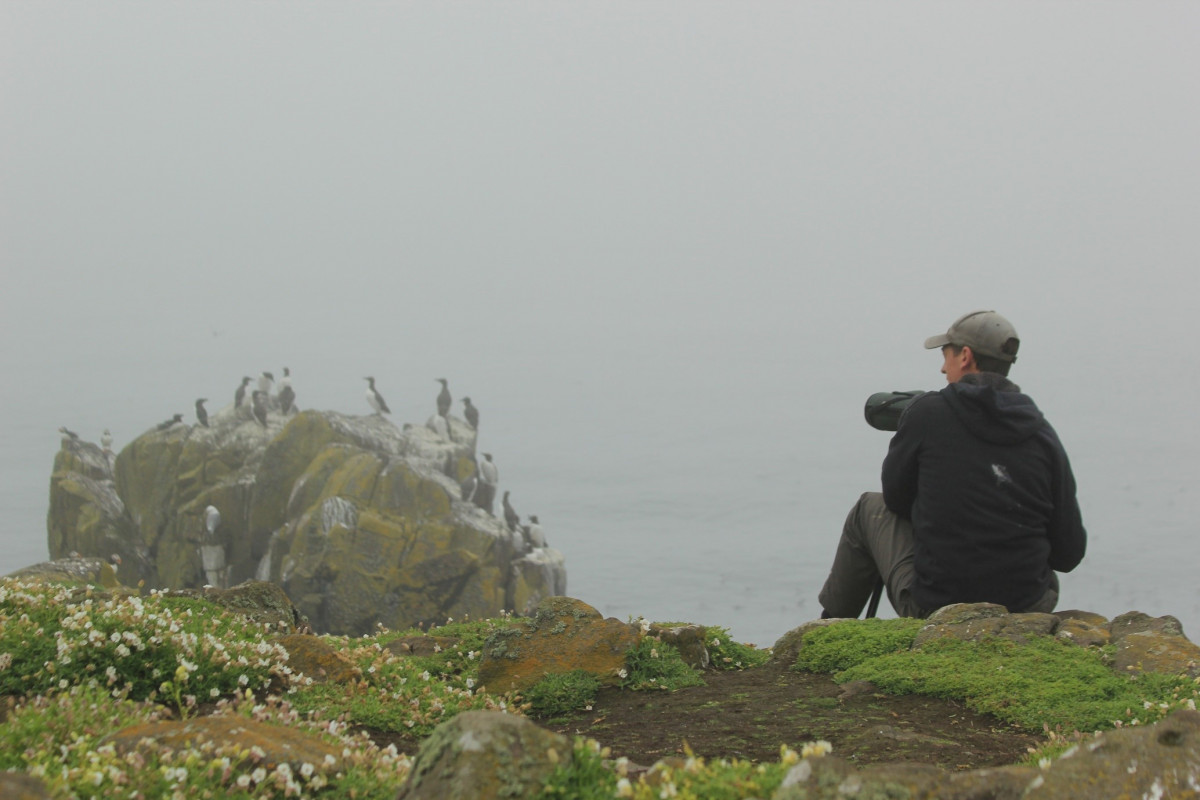
A Haar Day's Month: Gull Tracking on the Isle of May
Daniel is a Research Ecologist and part of the Wetland & Marine Research Team. His work primarily involves fieldwork and data analysis contributing to seabird tracking and monitoring projects.
“Go! Go! Go!”
I yank the cord, heave myself over the rocky embankment and run towards the sea. Herring Gulls rise from their nests as I descend into their colony, aiming for one bird, on one nest in particular. The cord I’ve pulled has triggered a loop to tighten around the sitting bird’s leg. It’s worked: with me beelining towards it, the gull takes off, only to be halted in mid-air. My heart leaps as it floats almost into my reach - but then it kicks off the loop, flaps off into the blue North Sea sky, and my heart falls back down. It’s May on the Isle of May, and we’ve been foiled again.
The Isle of May is a National Nature Reserve, and one of the few places the public can walk up to the edge of a seabird colony, buzzing with Guillemots, Razorbills, Puffins, Kittiwakes and large gulls. These raucous breeding grounds are usually incredibly inaccessible. My colleague Gary Clewley and I followed the same routine here for weeks, Gary watching a colony closely from a high vantage point, shouting over the radio to me as I hid behind big rocks in a game of hide-and-seek with the gulls. We were trying to safely capture adult Herring and Lesser Black-backed Gulls on the island, to ring the birds and attach tracking devices.
There is a photo of Gary and myself, smiling, standing on the Isle of May’s concrete jetty next to a pile of boxes and bags. We are waiting for a boat to take us back to Anstruther after a month on the island. The boxes and bags contain every piece of equipment and material imaginable required to catch gulls. Despite all this cleverly designed kit stacked up by us, just about everything else required to capture gulls - particularly clear weather - had been absent for most of the month, and, until a few hours before this photo, we had not been smiling.
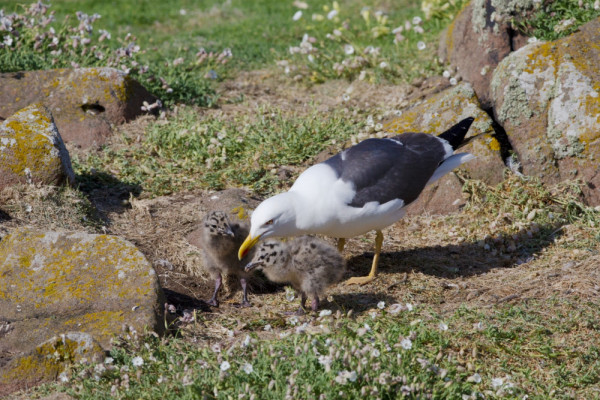
The island is dotted with placards describing the wildlife, flora, and distinctive weather, and it was on one of these placards that I read about a major source of our fieldwork woes, while at the same time standing in the midst of it. Haar. Cold, damp haar. Lighthouses and horns across the Isle were previously used to aid ships in steering clear during times of this dense icy fog, but there was no steering clear for us: we had to wait it out. COVID-19 meant we missed a year of fieldwork, so to actually be on the Isle of May was a thrill. The year off gave us a perspective on the privilege it is to do this work - we might not have been smiling yet, but we were happy to wait a bit longer.
To be able to safely catch the gulls and attach the tracking tag, we needed a few things to align. The birds needed to be well into their incubation period and committed to their nests. This makes them amenable to the not so inconspicuous traps that gull ringers use. Along with the leg loop, there are walk-in traps made of chicken wire placed over the nest; these are simple and pretty obvious, but birds truly committed to incubating their eggs don’t seem bothered by them, and if we placed the traps correctly, the gulls just walked right in.
Alongside timing our efforts with the breeding cycle of the birds, we also needed the weather to cooperate. We didn’t want to disturb the colonies when it was cold or wet during an important period for incubation.
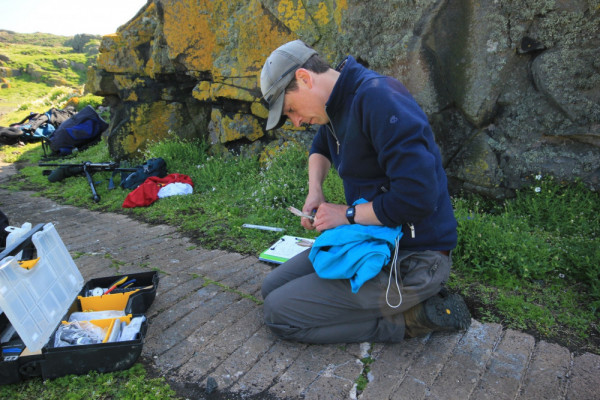
When the weather was finally warm and dry, and we had succeeded in actually capturing some gulls, we got down to the real work.
Each gull was deployed with a solar-powered GPS tag to collect information on their movements and behaviour. The tags are attached via a ‘wing harness’, similar to a backpack. The Teflon straps making up the harness are all linked with a loop of cotton. In contrast to the sturdy Teflon, the cotton is chosen for its weakness - it will wear away after 2-3 years, break, and release the straps so the tag falls off. This gives us enough time to collect the valuable data we need, and we don't want to leave the birds carrying a tag for any longer than necessary.
Placing the harness on a gull was the most delicate of our tasks, not made easier by the sometimes (justifiably) bitey gulls. With gulls, the adage is “Once bitten, twice bitten.” To place the tag, Gary and I worked in a team, with one holding the gull (usually me, the trainee) and the other sizing and carefully fitting the harness to the bird. Then we checked and double-checked the fit. We also fitted metal and colour rings to the bird’s legs and then - time to release! This meant placing the bird on the ground, stepping away, and hoping it wouldn’t immediately turn on us. Usually, the gulls just pooped, and flew off. To maintain an illusion of professionalism, I had to resist the urge to salute them as they wheeled around in the sky and returned to their nests.
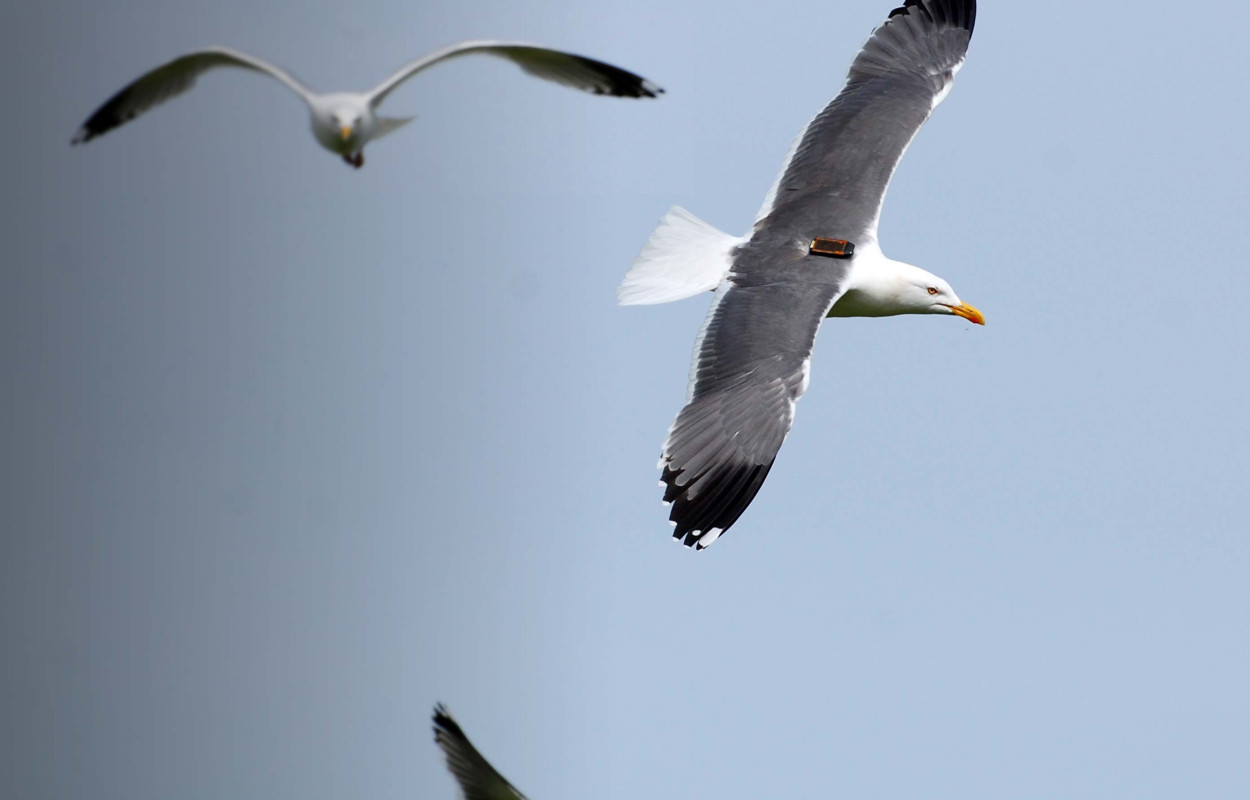
Seabird colonies have a music of their own.
Listen to the Isle of May during the breeding season:
Audio: Steve Willis
Our efforts, and the gulls' cooperation, will give us information for a range of projects examining gull foraging ecology and the birds’ potential interactions with offshore wind farms. We track their foraging trips from the island during the breeding season, and their migrations during winter. As well as providing an indication of their habitat use year-round, tracking data can also answer more basic questions about the species, such as how high they fly, vital knowledge required for assessing the potential for collisions with wind turbine blades.
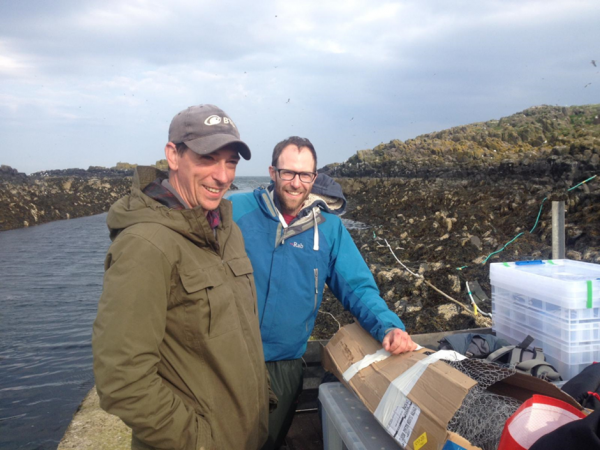
Examining their movements throughout the year also indicates the extent they may encounter other sources of risk when away from the Isle of May. Of the two species of gull we track from the Isle of May, Lesser Black-backed Gulls undertake the farthest migrations, down to Iberia and Northwest Africa, with some even visiting fishing ports in Western Sahara. As their GPS data are uploaded remotely via the mobile network, you can follow them on the move, and travel vicariously.
We spent a month on the Isle of May, managed to deploy the last of our tags a few hours before our boat arrived, and beam genuine smiles to the camera. Soon after getting back, Gary and I parted to head off to other seabird tracking projects - in June, other species are in the height of their breeding season. But, after two years of waiting, we could enjoy a moment of relief. Kit loaded on the boat, heading to Anstruther, I turned back to the Isle, and resisted the urge to salute.
Acknowledgements – This work was funded by the Department of Business, Energy and Industrial Strategy (BEIS) Offshore Energy Strategic Environmental Assessment programme, and NatureScot. This project was managed by Liz Humphreys. Thanks to NatureScot and Isle of May Reserve wardens. Ringing was undertaken by fully qualified and licensed ringers operating under the British Trust for Ornithology's Ringing Scheme. Deployment of tags was authorised by the scheme’s independent Special Methods Technical Panel.




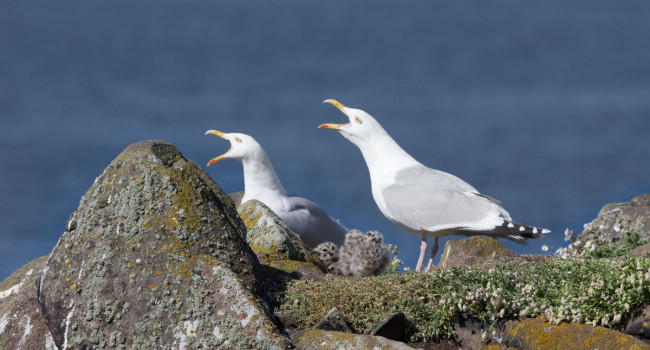
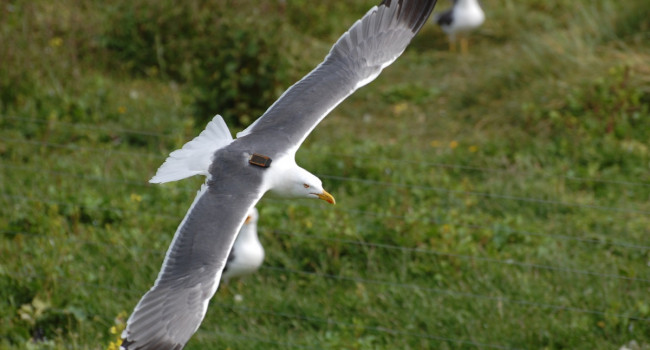
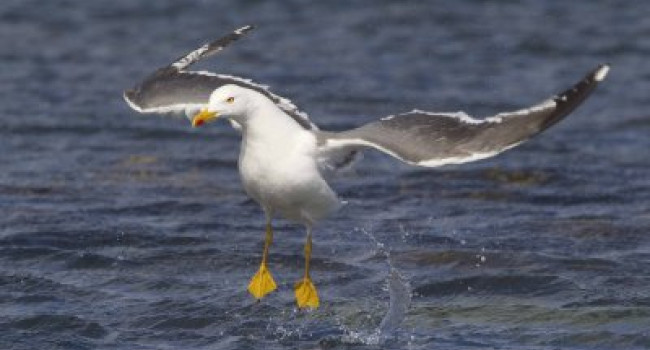

Share this page